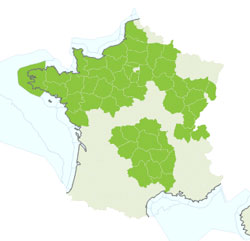Common adder France
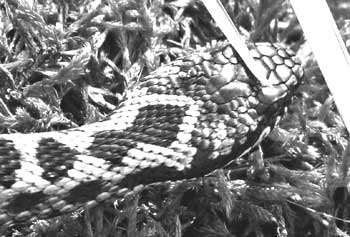

Common Adder Vipera berus Vipère Péliade
Common Adders are only to be found in the north of France, the east of France and the Massif where they grow to a maximum of 90cm although 60cm is more likely in most areas. They have a slightly flattened head and are round nosed, eyes with red iris and vertically slit oval pupils.
Adders are sexually dimorphic meaning that males and females appear differently. Males are light grey or silver in colour with a black zig-zag running down their back. In contrast, females are light brown or copper colour with a dark brown zig-zag running down their back. Underneath they are a greyish blue with intense dark marks. They can also be entirely black; these are normally to be found in high regions above the tree line and are usually females.
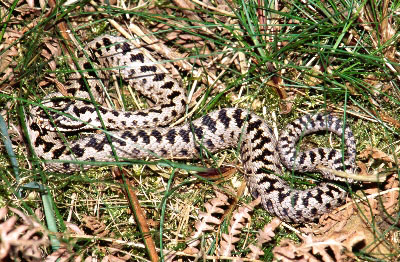
Diet is mainly micro-mammals such as voles, shrews and mice as well as lizards. To a lesser extent they will take moles, some amphibians and small birds. Much will depend on local availability. Juveniles will eat insects, worms, young frogs, small lizards etc. moving on to larger prey when they are larger than about 30cm.
Rough scrub, wasteland, hedges, scattered bushes such as heather, brambles and bushy thickets with open spaces provide the ideal habitat where there is cover for protection, ample food with places to warm up in the sun. Wet areas are tolerated as long as they aren't subject to continuous flooding
Reproduction takes place in late spring and the female will give birth to as many as 20 young adders towards the end of summer, although 8 to 12 young is more likely. It's not unusual for them to enter hibernation without eating first.
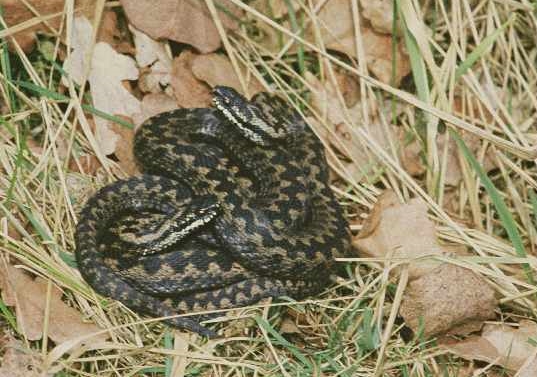
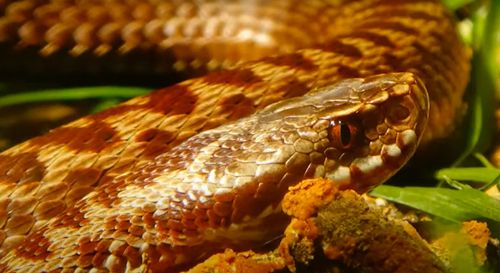
Hibernation can take place between October and March but is dependant on temperatures. As they require much lower temperatures than Asp vipers they can frequently be seen in January if sunny and mild.
They will only bite a human if they are surprised or threatened. Actual danger from Adder bites is grossly exaggerated with almost no likelihood of a person dying or suffering long term effects and in many cases little or no venom is released. Bites can even go unnoticed being so small and may just appear to be a bramble scratch or something similar.
Adders are in decline in France primarily as a result of human activity. Habitat loss and fragmentation, increased number of roads and traffic, pesticides and climate changes along with deliberate destruction by humans despite them being fully protected species. It's unlikely that adders will be present to any extent in many of the areas shown on this map.
